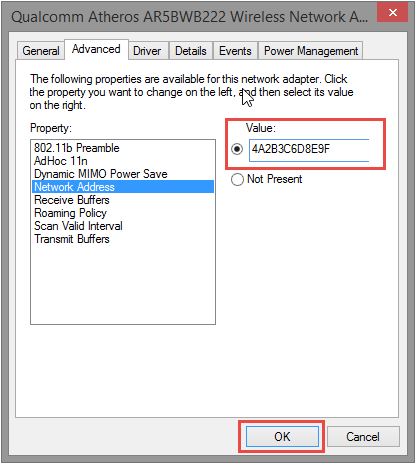
In this solution it is important to realize that the AP will actually detect multiple MAC addresses on the Wi-Fi link, one for each device behind the Wi-Fi bridge. If security on the Wi-Fi link is enabled (WPA/WPA2), the Wi-Fi bridge also needs to perform the 4-way security handshake for each newly detected MAC address, which results in even more overhead. An implementation of this is typically limited by the number of MAC addresses it can spoof. In this scenario each device behind the Wi-Fi bridge will have its own Wi-Fi association. In this case the Wi-Fi bridge sets up a new association on the Wi-Fi link for each attached MAC address. Let’s now consider the situation that a Wi-Fi client is bridging packets. an ARP request) is sent by the device with MAC address A. The example below shows the addresses in use when a broadcast packets (e.g. One of the MAC addresses contains the BSSID, this one identifies the Wi-Fi network. Over low bit-rate links, any extra bit not only causes the effective throughput to be smaller, but also introduces additional latency.Īs a consequence of the above two reasons, standard Wi-Fi uses three MAC addresses on the wireless link, as illustrated in the figure below. Wi-Fi was also invented at a time that every bit that was transmitted, counted. As a consequence every packet that is transmitted on the wireless link needs clear identifiers which wireless device transmitted the packet and which wireless device is the intended receiver. Therefore it was decided to implement, on the wireless link itself, a mechanism to make sure packets that were lost in the transmission are retransmitted. The Wi-Fi environment is a challenging environment, due to the unpredictable and very variable quality of the wireless link.

In the Wi-Fi world the situation is slightly different, read on and find out why! The operation of Wi-Fi

In a wired world bridges are used very often and typically don’t cause much problems. a printer) to a Wi-Fi network using a Wi-Fi bridge. Wi-Fi has become the preferred technology for in-home connectivity, but sometimes it’s needed to connect a wired device (e.g.


 0 kommentar(er)
0 kommentar(er)
